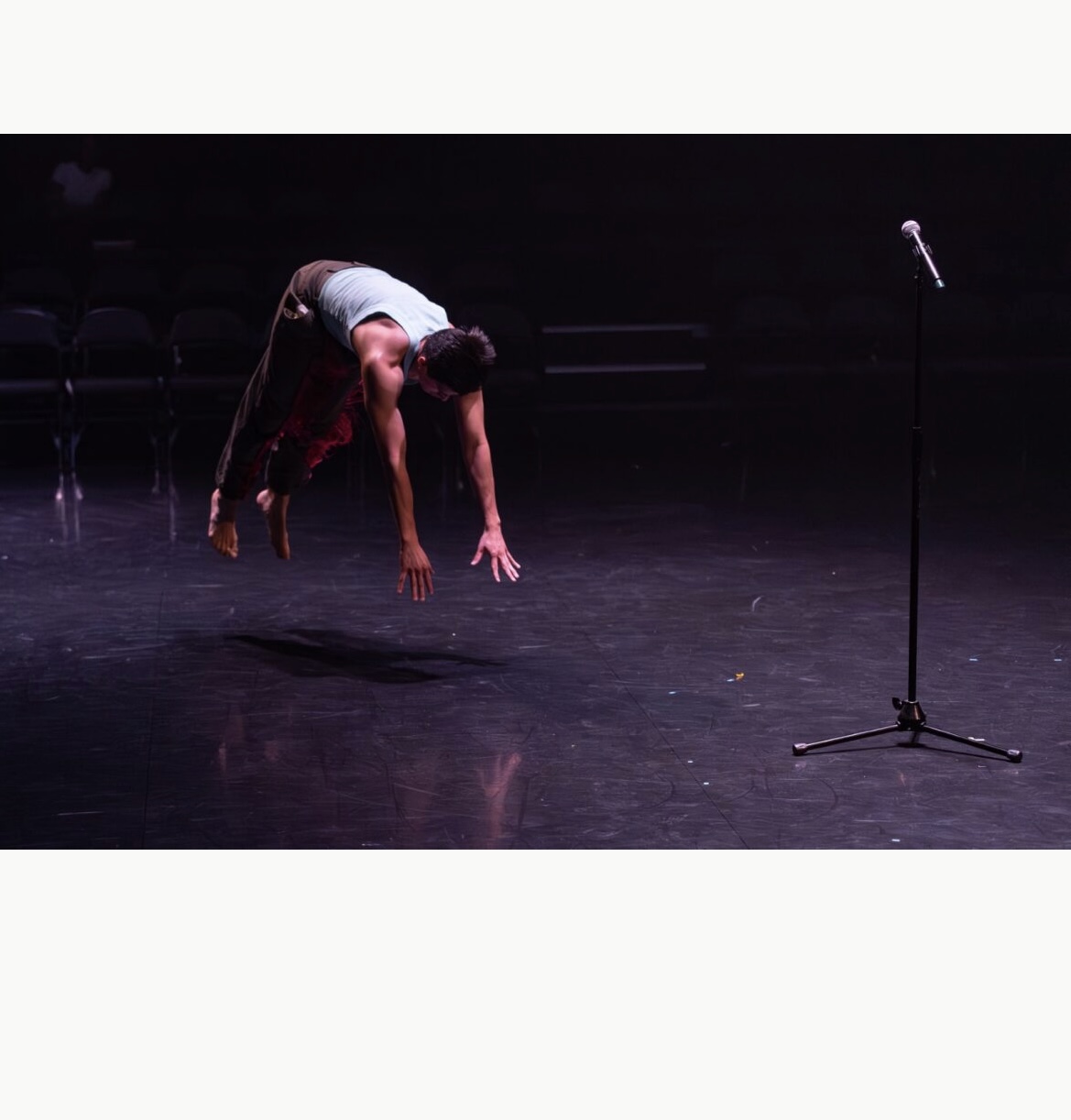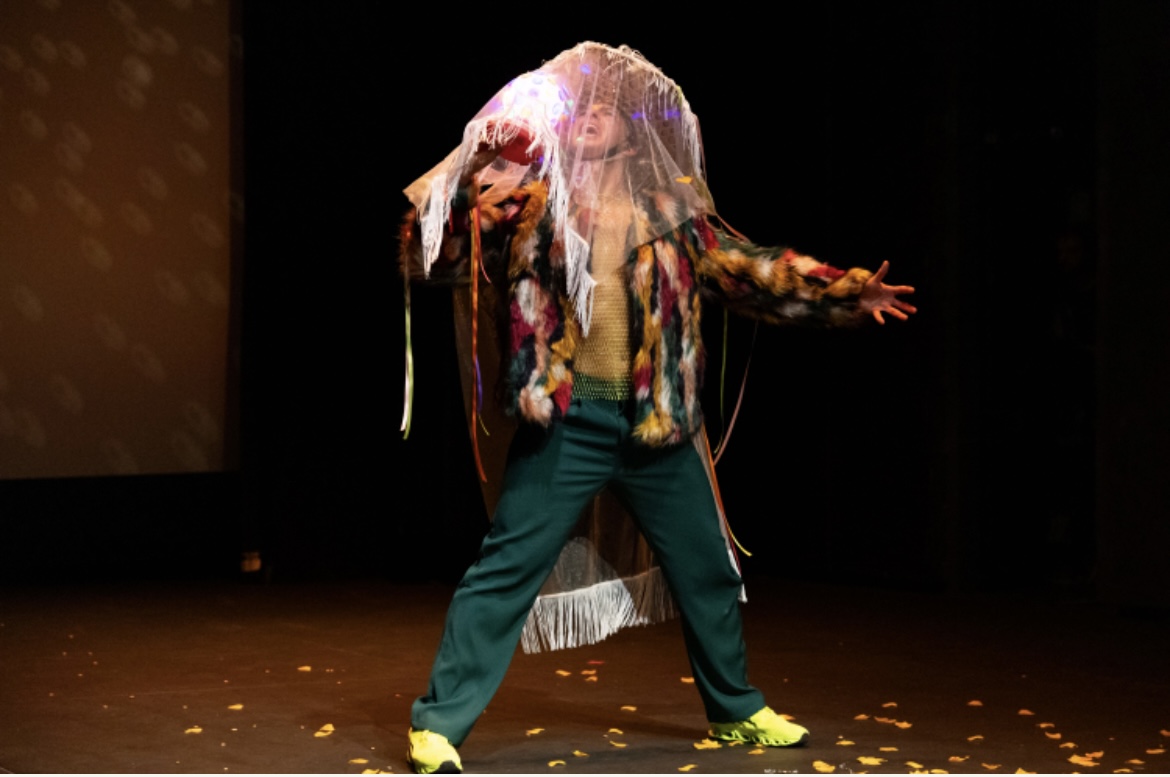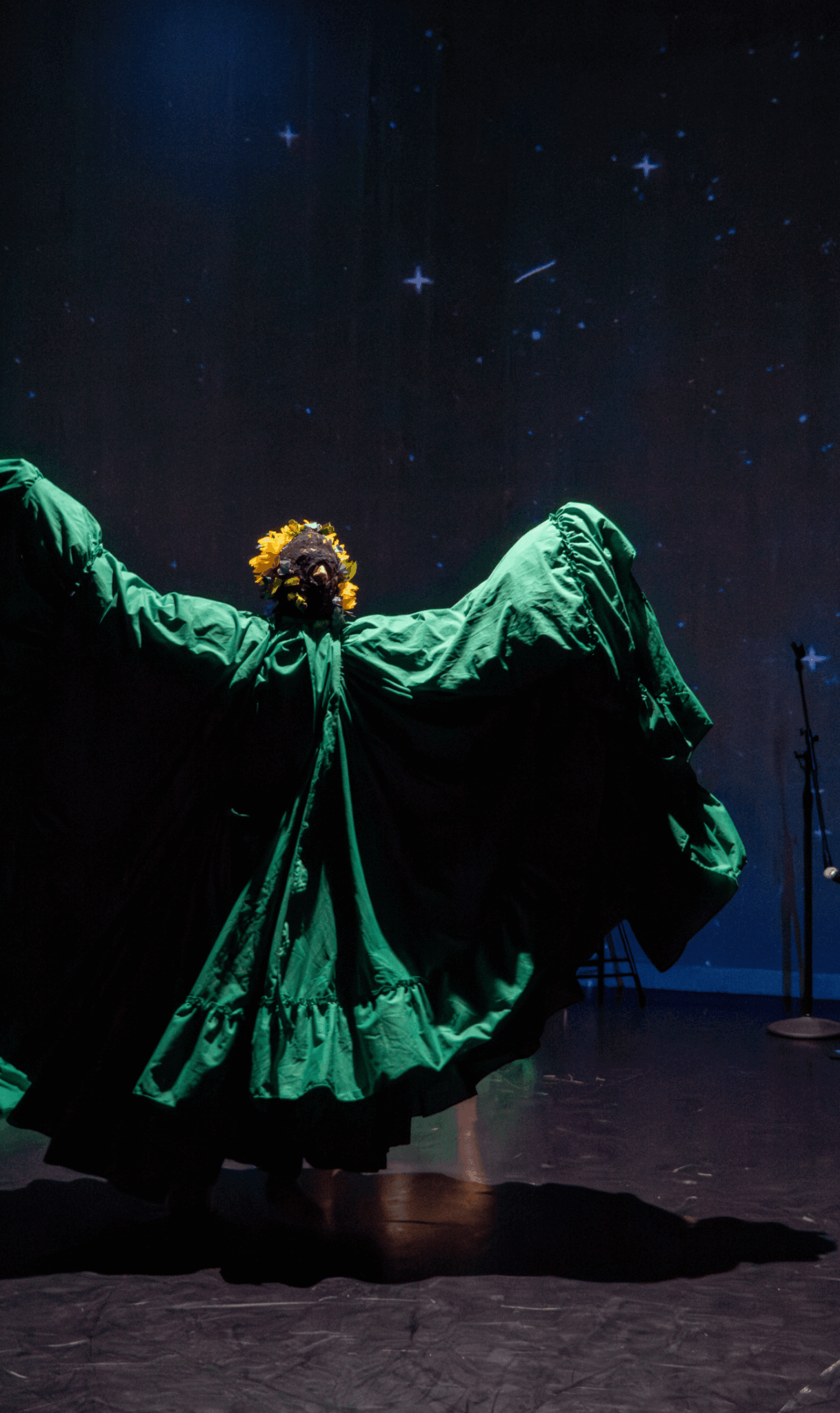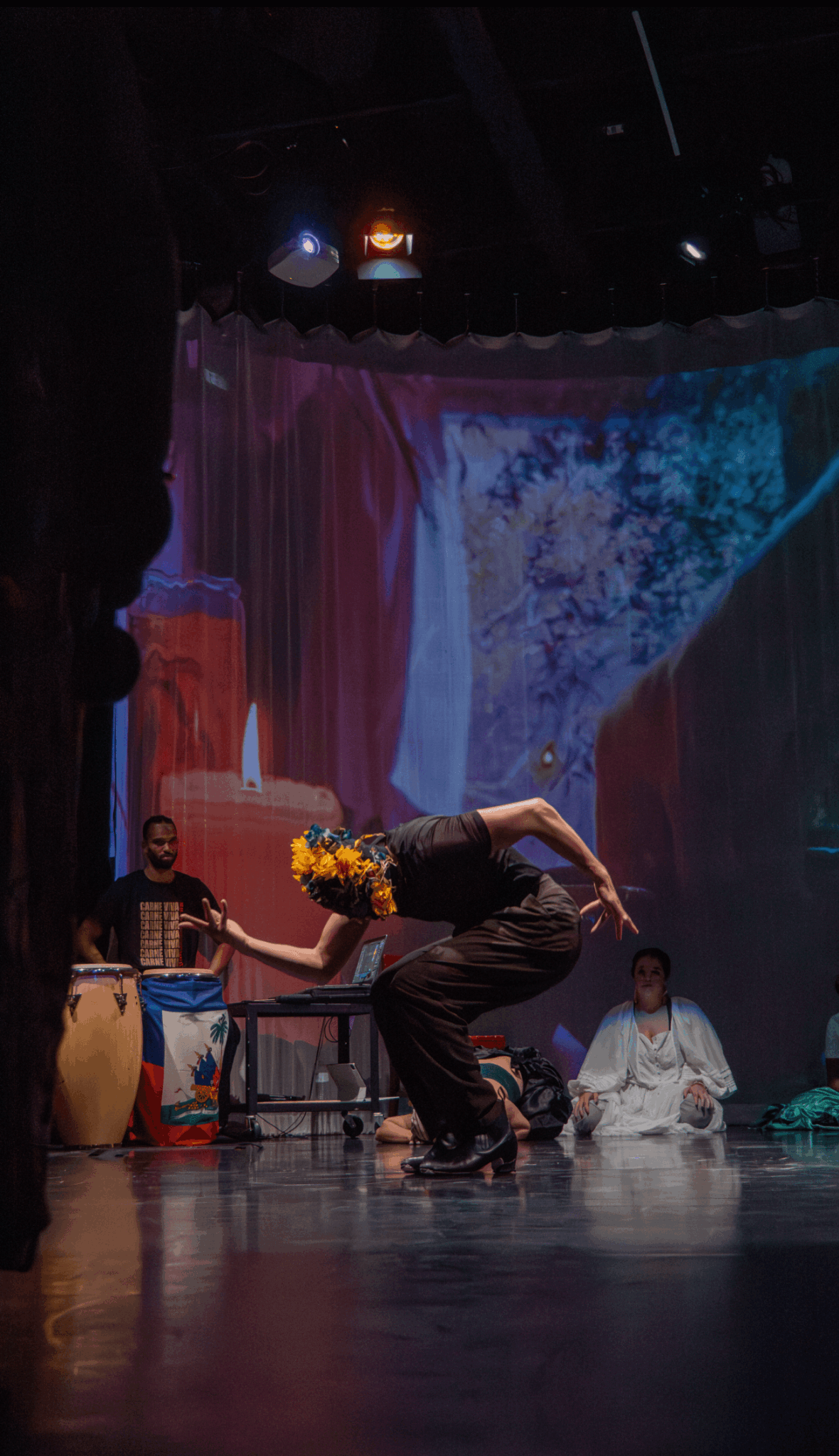We recently connected with Alfonso Cervera and have shared our conversation below.
Alfonso , thanks for taking the time to share your stories with us today Did you always know you wanted to pursue a creative or artistic career? When did you first know?
I will always carry deep gratitude for my mentor and friend, Kelli King, the first person who invited me into the world of university dance. Though I had already spent over fifteen years dancing professionally in Ballet Folklorico, something about the institutional setting filled me with fear. Perhaps it was my cultural upbringing but also the insistence that dance wasn’t a real job, that college was for becoming doctors, lawyers, anything else.
I remember opening the course schedule, scanning for technique classes, weaving them into my day not to take them, but to stand just outside their doors and witness. Monday through Friday, I’d find myself peering into modern and African dance classes, mimicking the movements from the hallway, my body learning in secret what my heart already knew.
One day, as Kelli was teaching, she noticed me through the propped-open door, walked over, and said with a smile,
“I’m going to see you in here next quarter, right?” It was then I took the leap. I signed up. I stepped into the space.
And in that space, Kelli helped me fall in love again—with movement,
with creativity, with myself as a dancer, a choreographer, and now, as a professor of dance.

As always, we appreciate you sharing your insights and we’ve got a few more questions for you, but before we get to all of that can you take a minute to introduce yourself and give our readers some of your back background and context?
I’m Alfonso Cervera, a Queer first-generation Mexican American choreographer, performer, and dance educator. I was born in San Bernardino, California, and now live and create between Los Angeles and Columbus, Ohio. My practice is deeply rooted in community, identity, and the constant tension between tradition and transformation. I’ve spent over 15 years as a professional Ballet Folklorico dancer, and while I hold that lineage close, my work today lives at the intersections of Folklorico and Modern dance, of queerness and Mexicanness, of legacy and futurism.
My entry into this field was not linear. Like many children of immigrants, I was told that dance was not a “real” profession. I knew otherwise in my body, but it took time to believe it in my spirit. I spent years dancing in cultural spaces, but I was hesitant to enter the institutional world of dance until a mentor, Kelli King, invited me into a university class. That moment was pivotal. Since then, my journey has evolved into a creative and scholarly pursuit that merges performance, pedagogy, and activism.
I am the co-founder of Primera Generación Dance Collective, which was recently named one of Dance Magazine’s 25 to Watch in 2025. Through this collective and my solo practice, I create experimental and collaborative dance works that often center Queer, BIPOC, and working-class experiences. I’m also developing Poc-Chuc, a hybrid choreographic and physical technique that fuses Ballet Folklorico with Modern and Afro-Latin dance aesthetics, designed to reflect and support Latine bodies in contemporary performance spaces.
I provide performance works, choreography, dance workshops, lecture-demonstrations, and mentorship always with an emphasis on collective authorship, historical awareness, and cultural reclamation. My work aims to hold space for people who exist at the margins, to archive our stories through radical movement, and to challenge the dominance of Eurocentric aesthetics in the dance field.
What sets my work apart is its refusal to choose between the “traditional” and the “experimental.” I believe in queering both. I bring the aesthetics of Mexican Ballet Folklorico into conversation with improvisation, sound design, queer theory, and social justice frameworks. I also center accessibility and collaboration, my performances often grow from community workshops and multi-generational dialogues.
What I’m most proud of is the way my work creates bridges: between generations, between disciplines, and between people who might not see themselves reflected in mainstream dance. Whether I’m working with students at The Ohio State University or collaborators in Los Angeles, my mission is the same, to honor our past while imagining a more inclusive, liberatory future for dance.
For anyone following my work or considering collaborating, I want you to know that this is a space for transformation. For remembering. For dreaming. For joy. You don’t need to come with the “right” technique or background. You just need to show up with your whole self.

What do you find most rewarding about being a creative?
For me, the most rewarding aspect of being an artist is the ability to transform personal and collective histories into movement that can be witnessed, felt, and remembered. As a Queer Mexican American artist, there’s something profoundly healing about creating work that not only reflects my own lived experience but also uplifts the stories of those who have been historically silenced.
One of the greatest gifts of being a creative is the opportunity to connect with other artists who share the same values: a commitment to justice, to representation, and to pushing the boundaries of form. Networking, for me, isn’t about professional gain, it’s about building a chosen family of collaborators who believe in the power of art to create change. It’s about dreaming together, challenging one another, and holding space for joy, grief, and everything in between.
This work thrives in community. It’s in the rehearsal rooms, the messy creation processes, the shared meals after a long day of tech, where we cultivate something bigger than ourselves. We’re not just making art, we’re building systems of care, visibility, and resistance.
I’m proud to be part of a growing network of artists who are collectively reimagining what dance can be, who it serves, what it honors, and how it can hold space for the fullness of our identities. That’s what keeps me going. That’s where the magic lives.

Are there any books, videos or other content that you feel have meaningfully impacted your thinking?
One of the most significant people who have impacted the way I think about my art is my partner Dr. Irvin Manuel Gonzalez. He is a brilliant scholar, artist, and organizer whose work centers around Quebradita dancing and prison abolition, two seemingly separate worlds that he brings together through deeply embodied and radical research. His work challenges the systems that criminalize and invisibilize our communities and uses dance as a tool for liberation, resistance, and healing.
Dr. Gonzalez doesn’t just theorize abolition he lives it through his methodology, his pedagogy, and his community engagement. Watching the way he navigates the academy while staying rooted in community care has been a blueprint for me. He has taught me that leadership in the arts doesn’t have to mimic hierarchical or capitalist models. Instead, we can center collectivity, mutual respect, and the cultural knowledge our communities already hold.
As an artist who’s constantly balancing creative direction, project coordination, and mentorship, Dr. Gonzalez’s work has helped me see how my work can expand beyond into other intersectional relationships. I don’t just see myself as someone who leads projects, I see myself as someone who cultivates ecosystems. Whether I’m organizing rehearsals, navigating institutional spaces, or collaborating with sound and media artists, my approach is rooted in transparency, empathy, and a shared sense of purpose.
He reminds me that there is power in specificity and by focusing on our own cultural forms (like Quebradita or Folklorico) and the people who have kept them alive, we can create models of success that are rooted in our values rather than borrowed from systems that weren’t built for us.
Dr. Gonzalez’s scholarship and leadership have been instrumental in shaping how I see myself not just as a choreographer, but as an architect of spaces where working-class artists can thrive.
Contact Info:
- Website: https://www.cerveraalfonso.com
- Instagram: fonzy110990

Image Credits
Lexi Clark – Stilianos


